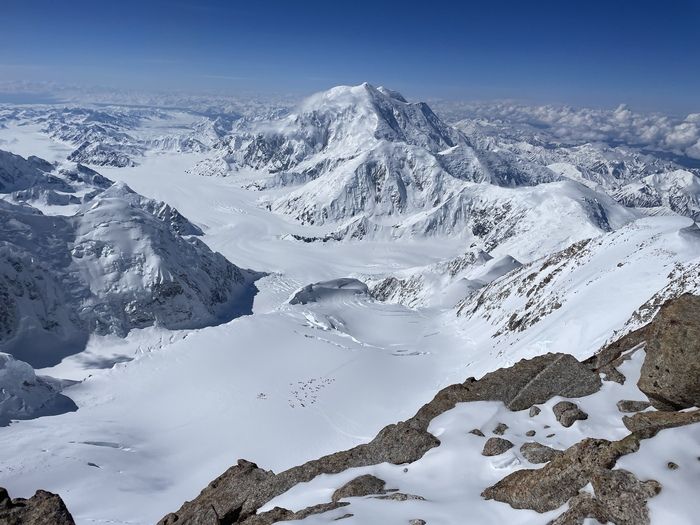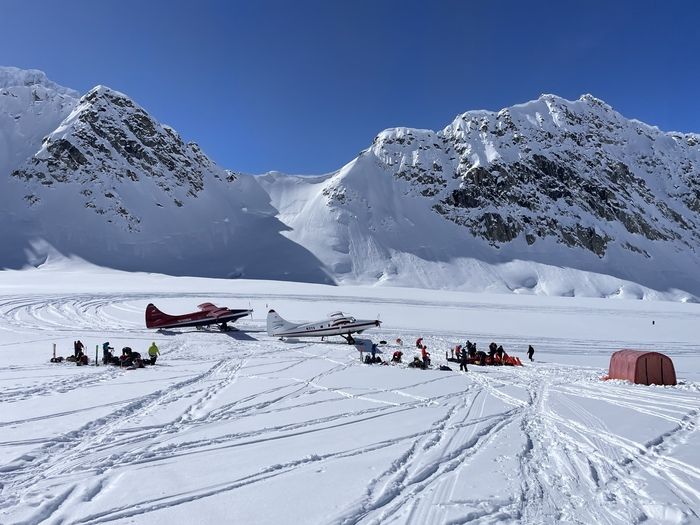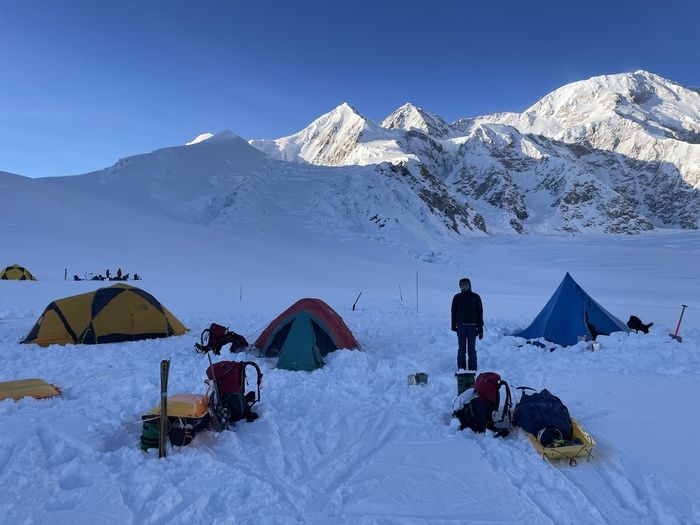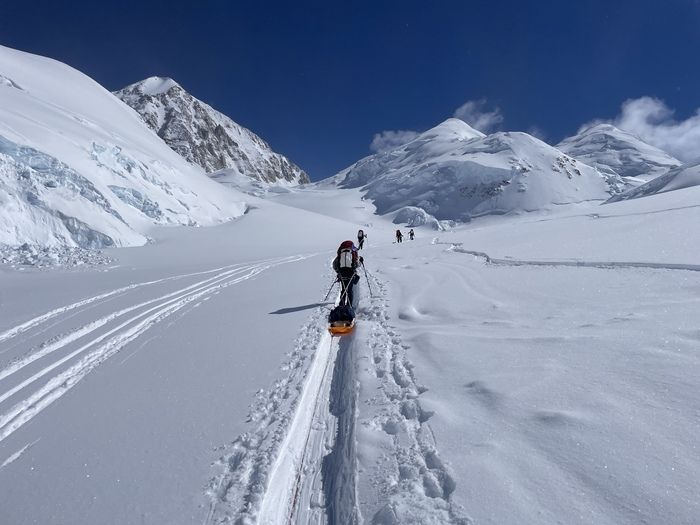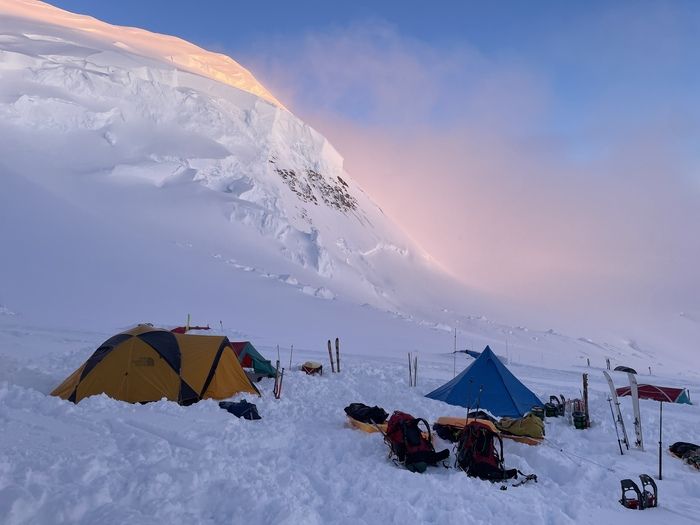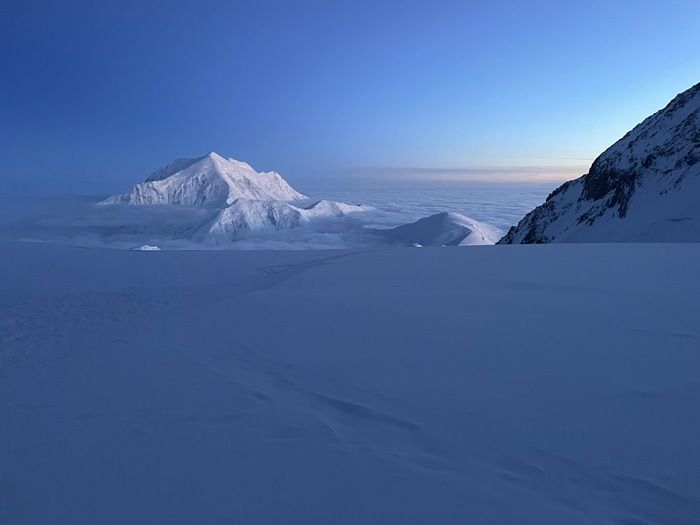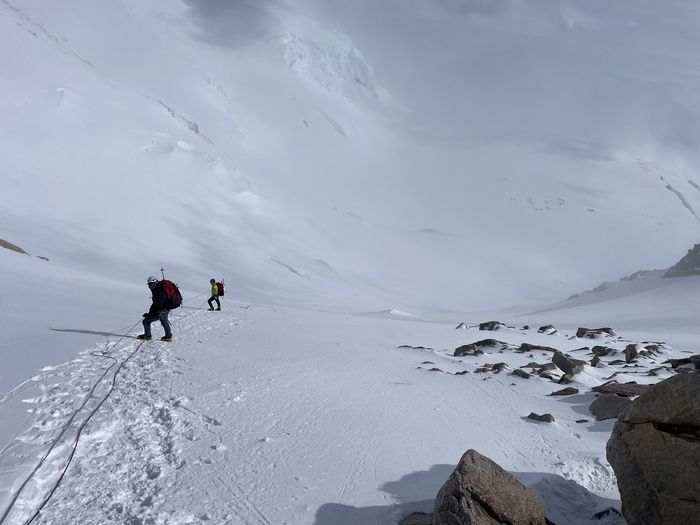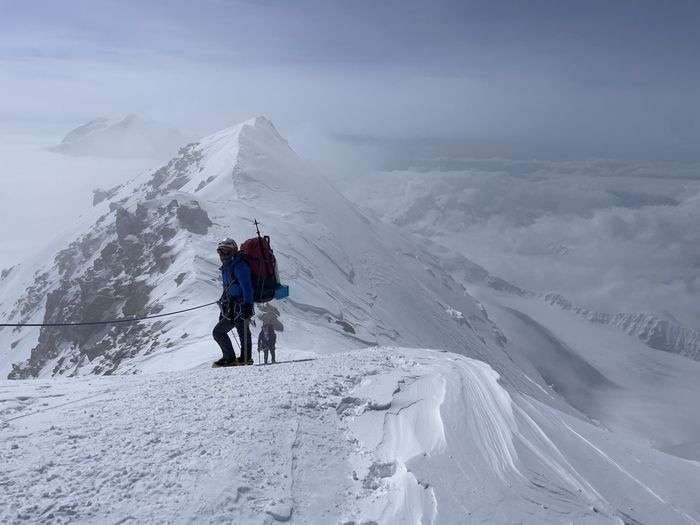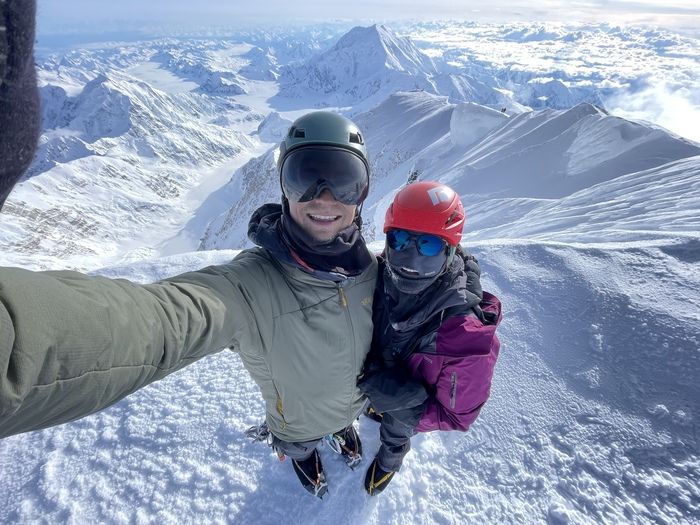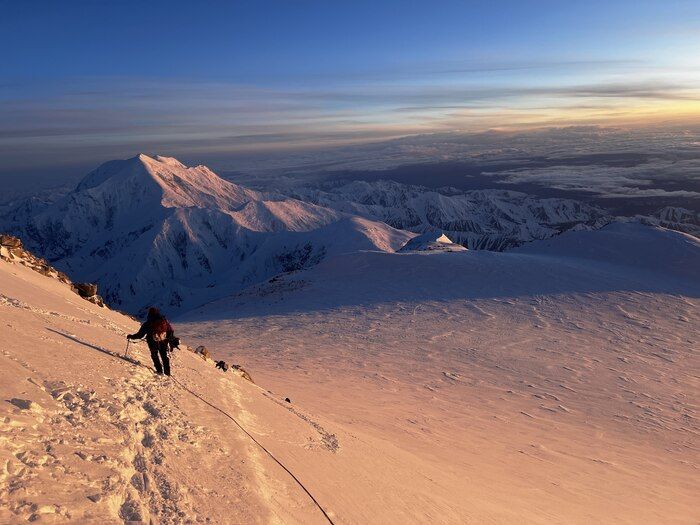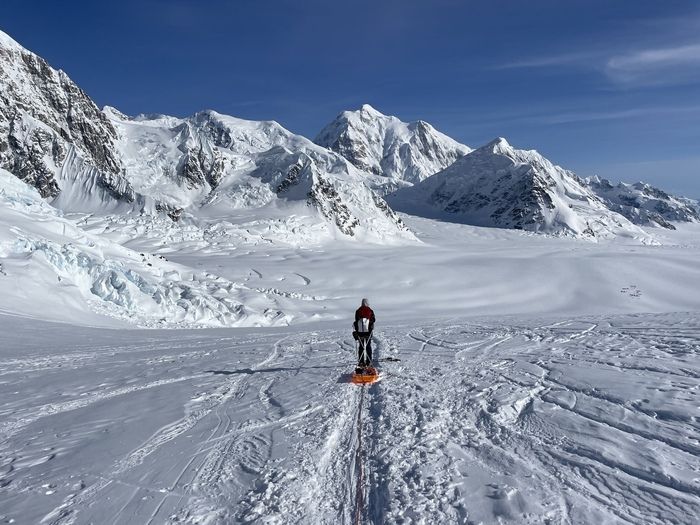Denali (McKinley)
Looking down from 17K camp
Cassondra and I had talked about climbing Denali for years but the prime climbing season (May/June) is during school and Cassondra couldn’t take a month off of work. This year was different. We decided to take a sabbatical year to travel, put our things in storage, sold whatever we didn’t need and moved out of our apartment at the end of June. This gave us the ability to get to Alaska the following spring and when some close friends talked about organizing an expedition, we knew this was going to be the year.
No Nuts Denali Dreamers (photo: Fred Caton)
The logistics were worked out over several meetings during the course of the year. We were lucky to have a lot of gear and the big ticket items (boots, sleeping bags, parkas and down pants) we were able to rent near Seattle. We applied and were granted permits in January. Our team name was No Nuts Denali Dreamers (one of our team members had a severe peanut allergy). The park service just referred to us as No Nuts.
Dropped off on the Kahiltna Glacier
We drove from Seattle and met everyone else in Anchorage on May 5th. We spent the next two days shopping for food, precooking and vacuum sealing our meals, inspecting and repairing our gear (tents, clothing, stoves). On May 8th we drove to Talkeetna and spent a cold rainy day attending orientation with the park rangers then rigging sleds, repacking and weighing our gear one final time. Our gear weighed in at just over 120 pounds per person.
First Camp on Denali
Three non-stop days of packing had been exhausting but we all got a chance to relax for about 45 minutes listening to our pilot’s playlist as he flew us onto the mountain. It was the morning of May 9th. Unloading the plane was chaotic as planes were landing and taking off all around us. We opted not to cache any gear at the landing strip and set out for Camp 1. The weather was incredibly warm and we all broke a sweat dragging out sleds up the slight incline of the Kahiltna glacier.
Ascending to Camp 2
My legs were cramping hard from the weight by the time we reached camp and we quickly dispersed into what would become a routine ritual for the next three weeks: melting snow, leveling platforms, pitching our tents, digging out a kitchen and a latrine. The whole process took about 2 hours each time and another 2 hours to break it all down. After camp was set, we all congregated in the cooking tent for another 2 hours while teams of two took turns cooking soup, dinner, tea and dessert. On days we didn’t move the tents, we would saw snow blocks for privacy and shelter from the wind.
Evening at Camp 2
For the next two weeks we spent a day carrying up half our gear, caching it in a snow pit then descending back down for the night. We’d break camp and move it up the mountain the next day. Being one of the early expeditions on the mountain gave a magnificent sense of desolation. You often felt alone on the mountain as you navigated through fresh snow. The camps were also just a handful of sleepy tents. We had made it to 14,000’ camp at the end of the first week.
Midnight at 14,000’
The wind descended on us for a few days at 14 camp, but it was a welcome rest after a grueling week. Breaking trail had been exhausting, so was the 11K to 14K carry where I decided to ditch my sled and carry everything on my back (bad idea). Cassondra’s hand had gone numb from either carrying too heavy or sleeping on a hard pad and she rested it for a few days.
Ascending the fixed lines
The forecast finally blessed us with 4 days of low winds and it was time for the summit bid. Carrying to 17,000’ was a long day that involved ascending fixed lines and then balancing along the steep West Buttress. The temperatures that night dipped to -25F and the isobutane canisters were so cold the MSR Reactor stoves barely gave off any heat. I melted one of my expedition mittens fiddling with the stove. The next day was beautiful and we almost yolo'ed a summit attempt (when the weather is good you go) but opted to bring up more food and fuel we had cached at 16K.
On the West Buttress
Cassondra and I slept with our full boots and as many clothing items as we could fit into our sleeping bags that night. It was another clear cold night with no wind. Five of us started for the summit around 10am, trailing behind about a dozen people. The autobahn was steep, icy and more difficult than advertised. We all roped and placed pickets for protection. That first 1000’ section took us about 4 hours. We unroped and all set off at our own pace once we got on easier terrain. Cassondra and I trailed behind. We had stopped to ditch a pack and calm some queasiness.
Ascending the Autobahn
At around 19,000’ we caught up with the rest. Kevin decided he was done and found a majestic spot to sit and stare out across the Alaskan range as we continued up towards the summit. We regrouped with Mick and Fred at the top of Pig Hill and made a lethargic final traverse along the summit ridge cresting the summit at 7:45pm. It was late, but the weather was damn near perfect. We descended quickly, scooping up Kevin along the way and spent 3 hours meticulously reversing the autobahn in the golden dusk. The sun finally set around 11:45 and we were back at camp exhausted at 12:30am. Tallis, who had stayed behind had hot water ready so we could guzzle a quick dinner before passing out.
Summit of Denali
The next day we packed up and took some group photos overlooking 14 camp. We wanted to descend quickly while the weather held. Returning to 14K camp we found it had almost tripled in size. The season was in full swing. We dug out our cooking tent and tried to eat as much food as possible that night and the next morning before packing up on one of the coldest mornings of the trip. We made a quick detour to dump our waste in the ‘poop crevasse’ and commenced what turned out to be the longest day of the entire trip.
Midnight descent (photo: Mick Pearson)
With a decent amount of unused food and fuel, our sleds were quite heavy on the descent. We tried attaching them behind us and in front of us, but we couldn’t keep them from flipping repeatedly. It was slow going, especially down Squirrel Hill. The weather had blessed us once again and we walked into the night, digging out waste and supplies we had abandoned at each successive camp. We arrived at the airstrip at 12:45am. We were very tired, but the warm temperatures and numerous existing platforms made setting up camp a breeze. We promptly fell asleep and woke up to the ranger shaking our tent to tell us we’d be picked up in 30 minutes. We scurried to break down camp and dragged our gear onto the airstrip where we had embarked 17 days before.
Back to the airstrip
The roar of propellers sounded above the mountains and as we waited for our plane to land there was one last chance to reflect on the adventure. Cassondra and I had met on a mountain, climbed many mountains and done it all over the world but the Alaska range was the most desolate place we had ever been. It was a place few visited and none lived. An incredible adventure and a difficult challenge we felt prepared for and are unlikely to surpass for a long time to come.
